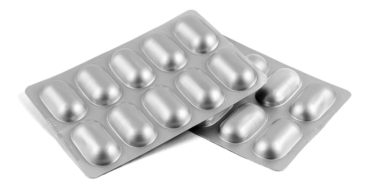Glucosamine is a compound found naturally in the human body and classified as an amino sugar. It is found in gel-like layers of protective cartilage. These layers prevent the joints from hitting and rubbing against each other. It is taken as a nutritional supplement as it is not found naturally in foods. The supplements are produced from the shells of shellfish such as shrimp, crab, and lobster in a laboratory environment. Although further research is needed on the benefits of glucosamine in the treatment and protection of bone and joint diseases, it is recommended for people of over middle age.
Table of Contents
What is Glucosamine?
Glucosamine is gel tissue found in cartilage. It prevents the joints from rubbing against each other. These supplements are usually produced from the shells of shellfishes. It can also be synthesized from glucose and amino acid glutamine in a laboratory setting. It has forms such as glucosamine sulfate, glucosamine hydrochloride and n-acetyl glucosamine. These forms cannot replace one another.
People use oral glucosamine sulfate supplements to get rid of painful conditions caused by infection, cartilage loss (osteoarthritis), and cartilage breakdown. Having anti-inflammatory properties, the supplement helps regenerate the cartilage. It may be taken orally. It may also be used in cream or ointment form. (1)
What is Glucosamine used for?
It helps the treatment of diseases such as:
- Age-related joint and bone diseases: In later years, a decrease in glucosamine secreted by the body occurs. Therefore, oral supplements help treat joint and bone diseases, especially osteoarthritis (calcification) and osteoporosis. (2)
- Irritable bowel syndrome: Some studies show that it can help regulate bowel movements of patients with irritable bowel syndrome.
- Multiple Sclerosis (MS): Some studies show that n-acetyl glucosamine can delay the onset or progression of MS symptoms. It is also frequently used to treat inflammation in the body.
- Temporomandibular joint dysfunction (TMJ): TMJ occurs in the temporomandibular joint located inside the chin. It affects adults and middle-aged people. TMJ affects the joint that connects the chin to the skull and causes jaw pain. Unlike normal conditions, individuals with TMJ cannot move their heads up or down or to the left without pain. The use of glucosamine in TMJ patients helps alleviate the disease, reduce the pain, and result in faster treatment. (3)
- Interstitial cystitis: Interstitial cystitis occurs due to the lack of glycosaminoglycan, which is one of the structural components of glucosamine. Therefore, regular intake of the supplements can facilitate the treatment of interstitial cystitis. (4)
Glucosamine is also beneficial for these conditions:
- It can treat the irritation in the stomach, bladder and intestines.
- Reduces joint inflammations around the back and neck.
- Restores tissue and bone trauma caused by accidents with broken bones or injuries.
- Reduces pain and swelling due to rheumatism.
Benefits of glucosamine
Glucosamine, together with a lubricating fluid called synovial fluid, helps the joints move smoothly over each other. It minimizes friction between joints and enables bones to move without pain. Therefore, it is regularly used by many athletes.
Besides being a strong anti-inflammatory, it also has an anti-aging effect. It can reduce wrinkles and prevent age-related spots.
Does glucosamine work for osteoarthritis?
Osteoarthritis is the most common form of calcification. In osteoarthritis, there is rapidly progressing cartilage glycosaminoglycan degeneration. Therefore, the supplements can help reduce pain in patients with knee, hip, and spine osteoarthritis. It shows positive results at high rates, especially in patients with knee osteoarthritis.
In a 6-year study, it was reported that cartilage loss of adults with knee osteoarthritis slowed down when they regularly took chondroitin plus glucosamine.
How do you take glucosamine?
There is no standard dose for the administration of it. The appropriate dose for each patient is determined by the doctor. Especially in the treatment of osteoarthritis, it can be administered 1500 mg/d, 750 mg BID or 500 mg TID.
The supplements should be quarterly discontinued for 3 months. If it is necessary to continue after the first 3 months of administration, it should be discontinued for 3 months, then the treatment should be started again.
Types of glucosamine
There are 3 common types of glucosamine found in various foods:
Glucosamine sulfate
It is the type used the most in clinical research, which exists in the human body. Many studies show that the supplement supports joint health and helps slow the breakdown of fluid between the joints.
Glucosamine sulfate is mostly obtained from the shells of shellfish such as shrimps, crabs, lobsters, but types synthesized in the laboratory environment for people allergic to seafood or do not consume seafood are also available.
Glucosamine hydrochloride
It binds to chloride molecules. Unlike sulfate, it is not usually produced from shellfish but has positive effects on joint health. This form is a good alternative for vegetarians and vegans, and for those not consuming seafood or allergic to seafood. (5)
N-acetyl glucosamine
It can be used to support joint tissue, like other types. In addition, it can be used as an anti-aging component for the skin. There are studies showing that it is also beneficial for digestive health.
Glucosamine, chondroitin and MSM
Just like glucosamine, chondroitin sulfate is a natural component found in cartilage. Chondroitin is a complex carbohydrate and helps cartilages to retain water. When it is combined with glucosamine, it helps support joint pillows, stabilize lubricating in joints and increase joint mobility. (6)
Methylsulfonylmethane (MSM) is a naturally occurring form of sulfur. It helps support muscles and tendons in the body. Chondroitin, glucosamine and MSM are a combination of drug as an adjuvant treatment in alternative medicine and this combination is considered to be effective in the treatment of calcification, muscle damage caused by exercise, and other joint disorders.
It is not known exactly how effective it is in the treatment of any medical condition. Further studies on this subject are needed. This product is usually sold as a herbal supplement, and it should replace medications recommended by a doctor.
Do any foods contain glucosamine?
Glucosamine sulfate supplements are usually produced from the shells of shellfish. It is not naturally found in foods. Therefore, it is used as a supplement.
Side effects of Glucosamine
Glucosamine sulfate is a very safe component when taken at a proper amount. Nevertheless, some side effects that can be caused by misuse and overuse are as follows:
- Nausea or heartburn;
- Diarrhea or constipation
- Numbness
- Itching
- Skin spots
- Headache
- Allergic reaction
Despite at low rates, glucosamine is likely to worsen asthma and cause fluctuations in blood sugar for patients with diabetes mellitus. Those with diabetes and asthma should consult their doctor before taking glucosamine. You should also talk to your doctor if you are allergic to shellfish.
Glucosamine drug interactions
- Blood-thinners: Glucosamine may cause bleeding or bruising when taken with blood thinners such as Warfarin (Coumadin). Therefore, they should not be taken together.
Glucosamine may also reduce the effectiveness of some medications:
- Acetaminophen: Tylenol
- Some chemotherapy drugs: Doxorubicin, etoposide, teniposide etc.
- Diabetes medications: Glimepiride, glyburide, insulin , pioglitazone and rosiglitazone




